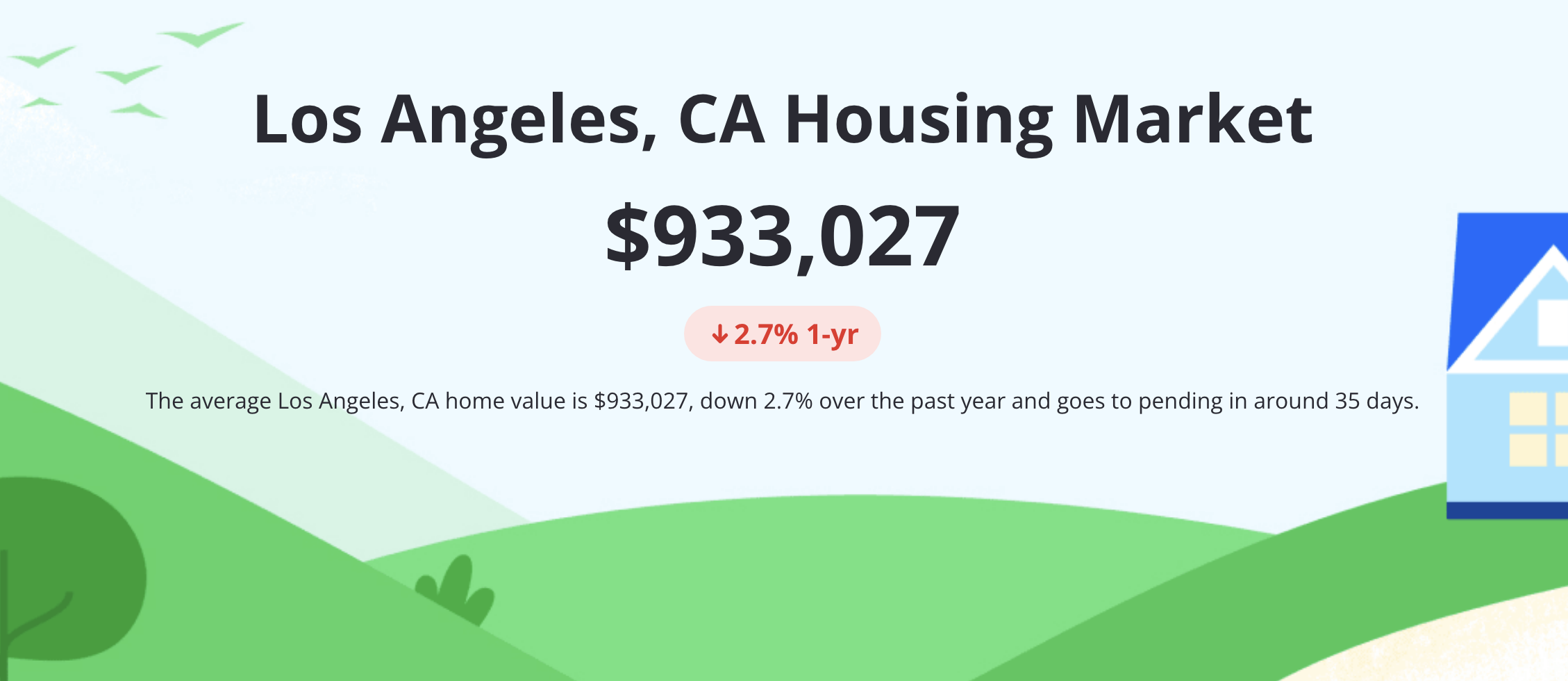What the 2025 Market Reset Means for Los Angeles & Inland Empire Investors
The U.S. housing market is entering a new phase. According to new analysis from Zillow, 53 percent of American homes lost value over the last 12 months—the largest share since 2012. And while national headlines sound dramatic, the story on the ground is far more nuanced, especially in markets like Los Angeles County and the Inland Empire, where demand, rents, and inventory pressures create realities very different from the national picture.
For landlords, investors, and property owners working with Fertig & Gordon, this period is less a crisis and more a strategic turning point. Understanding these shifts—and acting on them—will be essential for maximizing property performance in 2025 and beyond.
National Market Reset: Not a Crash… A Normalization
Zillow’s newest data shows:
53% of homes declined in value year-over-year
Average home values have corrected 9.7% below their peak
Only 4.1% of homes are worth less than their last sale price (still far below the pre-pandemic norm of 11.2%)
Inventory remains tight, with just 3.4% of new listings priced below their previous sale price
In other words:
Home values cooling doesn’t equal a collapsing market.
It signals a normalization after years of unsustainable appreciation.
This shift is creating new patterns and new opportunities for Southern California investors.
How Los Angeles County Fits Into the 2025 Market Shift
Los Angeles remains insulated compared to the national map. Even as price corrections ripple outward, demand inside LA County remains steady because of:
Tight inventory
High-rent submarkets
Stable long-term demand
Large populations of renters
High barrier-to-entry for new construction
What LA Investors Should Know
1. Appreciation will slow—but rent performance remains strong.
With values cooling, you should expect more modest appreciation. But rental demand in LA remains extremely stable. Vacancy rates in many cities stay low, and rental competition remains high in:
Pasadena
Arcadia
Monrovia
Glendale
Long Beach
West LA
Burbank
2. Well-maintained properties will outperform the market.
In a normalizing environment, deferred maintenance will hurt you. Homes with updated systems (plumbing, roofing, HVAC, landscaping, turn-ready interiors) will attract better tenants faster—and justify stronger rates.
3. Renters will expect more—and owners must deliver.
Higher cost-of-living pressures mean tenants expect responsive management, strong communication, and functional amenities. Poorly managed properties will see longer vacancy periods.
4. Investor opportunity: small multifamily.
2–4 unit buildings in LA County are becoming more attractive as sellers adjust asking prices. Strong rent demand + modest price softening = upside for investors focused on income rather than fast appreciation.
Inland Empire: The Region to Watch in 2025
The Inland Empire—Riverside County and San Bernardino County—is moving differently than Los Angeles.
IE was one of the fastest-growing regions during the pandemic, with major appreciation and huge inbound migration. Now, it’s stabilizing, but still outperforming many parts of the country thanks to:
Lower entry prices
Strong commuter demand
Huge logistics/industrial job growth
Continuous population expansion
What IE Investors Should Expect
1. IE price growth is slowing—but far from reversing.
Unlike markets such as Austin, San Francisco, or Seattle, the Inland Empire did not see dramatic overvaluation. Demand remains strong in:
Rancho Cucamonga
Ontario
Fontana
Riverside
Moreno Valley
Menifee
Temecula
2. Rents are still accelerating.
Rental demand continues to outpace supply, particularly for:
SFR rentals
Updated 3–4 bedroom homes
ADU-enabled properties
Clean, well-maintained mid-tier rentals
3. Investors shifting from LA to IE for better ROI.
As LA becomes more expensive to operate, many investors are reallocating capital eastward. The IE offers:
Better cash flow
Newer housing stock
Lower maintenance expenses
More predictable tenant demand
4. Turnovers are a high-ROI opportunity here.
A refreshed rental in the IE can command a large premium. Investors who update flooring, paint, fixtures, and landscaping are seeing immediate rent increases and faster leasing cycles.
What This Means for Fertig & Gordon Clients
1. Equity Protection Is Still Strong
Most owners in LA and IE still hold substantial equity despite recent cooling. Distressed selling isn’t expected to increase.
2. The Next 12 Months Will Favor Operational Excellence
With appreciation slowing, the owners who win will be the ones who:
Reduce vacancy time
Improve tenant retention
Keep maintenance proactive
Upgrade rentals strategically
Price units based on actual local demand
3. Investors Need City-by-City Strategies
LA County and the Inland Empire behave differently. Investors should not treat them as the same market.
Fertig & Gordon provides hyper-local guidance that helps owners maximize returns across both regions.
4. Value-Add Improvements Will Outperform
Rental demand is strong enough that upgrades generate real, measurable return—especially in the IE and neighborhoods in LA where supply is tight.
Strategic Recommendations for 2025
For Los Angeles County Investors:
Prioritize tenant experience to reduce vacancy
Update aging systems to stay competitive
Consider repositioning outdated rentals
Evaluate multifamily opportunities during the slowdown
For Inland Empire Investors:
Move quickly on light-renovation value-add opportunities
Hold properties long-term; migration trends support stability
Focus on 3–4 bedroom homes where demand is highest
Explore ADU and SFR rental strategies
For All Southern California Owners:
Schedule a portfolio review
Prepare for slower appreciation
Rely on operational upgrades, not speculative price jumps
Optimize rents based on real-time demand
Final Takeaway
This is not a crash.
This is a rebalancing.
The 2025 housing market is shifting from runaway appreciation to a fundamentals-driven landscape where operations, maintenance, and tenant quality matter more than ever.
For property owners, landlords, and investors across Los Angeles County and the Inland Empire, this is a moment to sharpen strategy—not pull back. The owners who adapt will see stronger long-term performance than those who wait on the sidelines.




